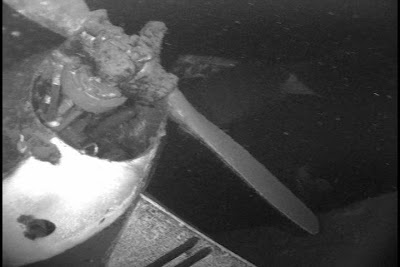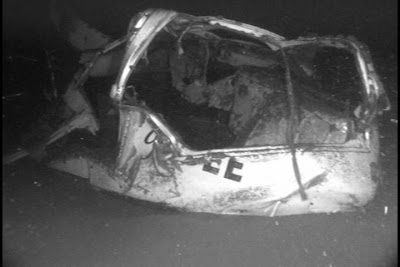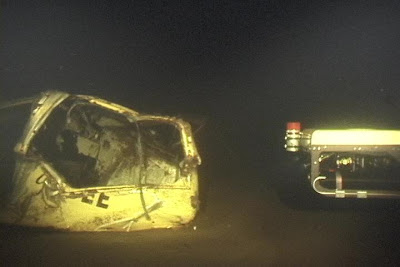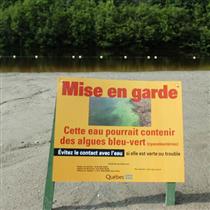MYSTERIOUS CRASH A typical Seabee aircraft
A typical Seabee aircraft
Photo credit: Kevin Magee
 High resolution Side scan sonar image of the Seabee aircraft on the bottom of Lac Simon.
High resolution Side scan sonar image of the Seabee aircraft on the bottom of Lac Simon.
Sonar image by: Dan Scoville
Quebec lake's deep waters reveal hunters' fateA group of persistent divers discover the intact wreckage of a bush plane that crashed in 1957 carrying 4 menJOE FRIESEN
November 17, 2007
Globe & MailFifty years after it crashed, the wreckage of a bush plane that disappeared while carrying a group of hunters has been found intact at the bottom of Quebec's Lac Simon.
The plane, a Republic RC-3 SeaBee, disappeared in bad weather on Nov. 21, 1957, as it was completing the third of its three trips that day. The carcass of a hunting dog washed up on shore. But the bodies of pilot Gaétan Deshaies, and hunters Tony Chivazza, Philippe Ouimet and Louis Hamel, all of whom were bachelors in their early 30s, were never found.
Last month, however, a group of divers who had searched the lake's deep waters for 10 years finally made a breakthrough.
There was a huge feast planned for their return, and they drew straws to see who would get on the first flight and who would have to wait until the plane came back. Mr. Guenette drew the short straw, but one of the men, who was bigger and more comfortable in the cold, offered to switch places with him.
Mr. Guenette gladly accepted, and was among the group that waited uncertainly that day for friends who never returned. He was haunted by survivor's guilt for the rest of his days, his family said, and died in 1981.
The legend of the plane crash lived on with Mr. Morin, 39, who as a child spent summers at his family cottage on Lac Simon, just north of Montebello, Que. Rumours circulated that a monster had devoured the plane, or that it had crashed because it was weighed down by gold. Mr. Morin later became a keen scuba diver, and, along with his friend Chris Koberstein, began a painstaking search for the plane's wreckage about 10 years ago.
This autumn, for the first time, they were able to use side-scan sonar to map likely locations for the wreckage on the lake's bottom.
Mr. Koberstein, the most experienced deep diver, was the first to discover the site.
"It was a phenomenal experience," Mr. Koberstein said. "It's emotional, but you can't lose your focus."
The plane itself rests on the lake bottom like a scorpion, its fuselage intact and its tail arching upward. It has retained its yellow colour, and many of the items inside appear undisturbed. The cabin is crushed and the roof is touching the instrument panel. A rifle rests across the front seat.
About 15 metres in front of the plane, the divers found the first body. It had some of its flesh and organs still attached, and its skull rested in the silt next to the skeleton. The second was about 30 metres behind the plane. The third body was found in the cargo hold, behind the pilot's seat, and the fourth body hasn't been found.
"One of the reasons we've gone to the media is that all the passengers and the pilot were bachelors and we're not aware of any family members. We'd really like to meet them. We know their names, but we'd like to know more about them to identify them and tell their loved ones that they have been found."
The divers are quite sure there is no treasure aboard, and the plane itself isn't worth much either. They have registered it with the receiver of wrecks and notified the Quebec Provincial Police. They also won't divulge the exact depth or location of the site to discourage people who might want to go out themselves.
So what caused the crash? Mr. Koberstein, an aircraft mechanic, suspects engine failure.
"Judging from the way the impact is," he said, "I suspect the plane stalled just prior to hitting the water and caught a wingtip, and it might have spun it around or cartwheeled."
 Propeller of the wrecked Seabee aircraft in Lac Simon.
Propeller of the wrecked Seabee aircraft in Lac Simon.
Image by: Dan Scoville  External view of the fuselage of the Seabee aircraft that crashed in Lac Simon
External view of the fuselage of the Seabee aircraft that crashed in Lac Simon
 Québec veut ajouter 54 000 kilomètres carrés au territoire forestier
Québec veut ajouter 54 000 kilomètres carrés au territoire forestier Freiner la déforestation pour sauver le climat: une idée à creuser à Bali
Freiner la déforestation pour sauver le climat: une idée à creuser à Bali











